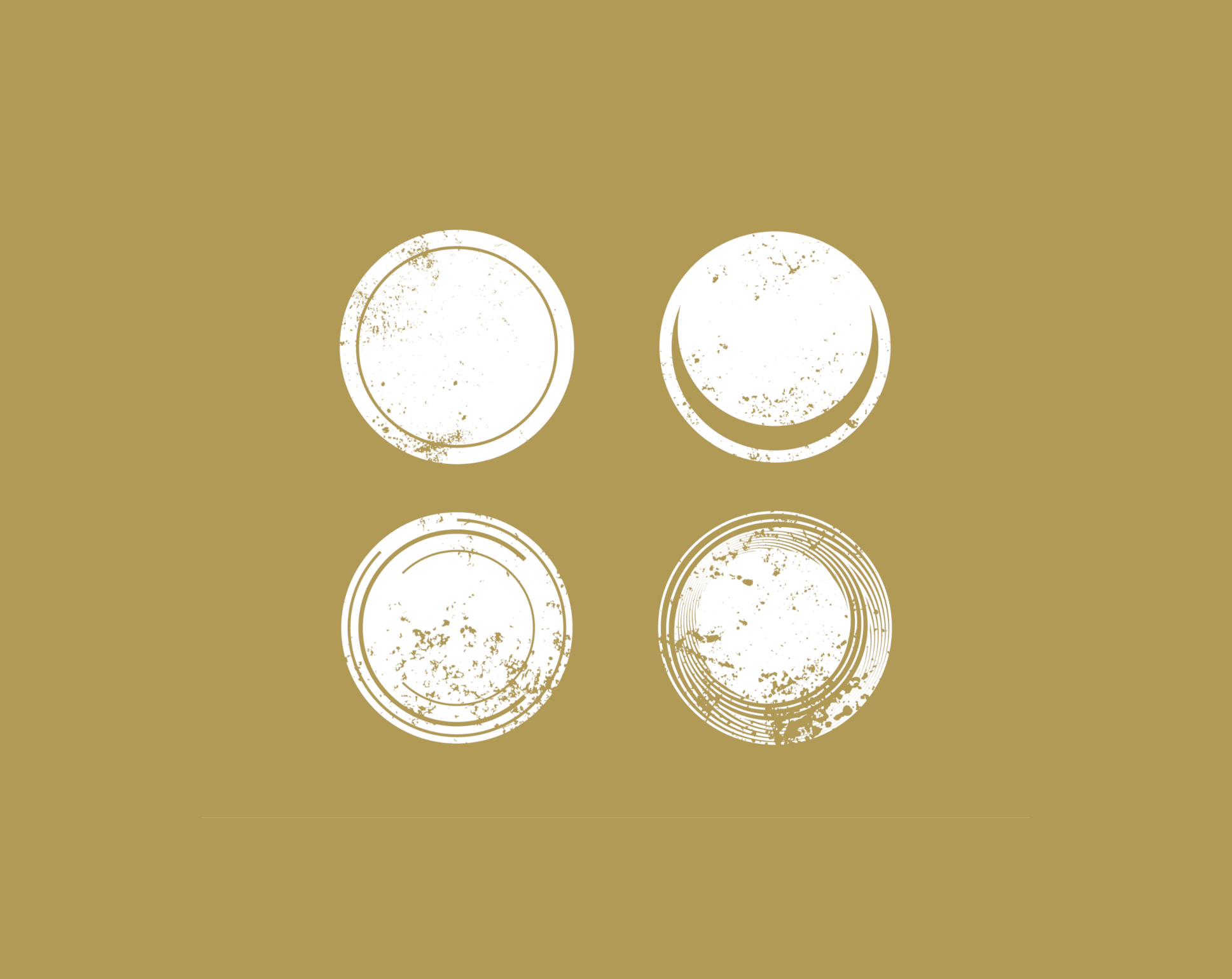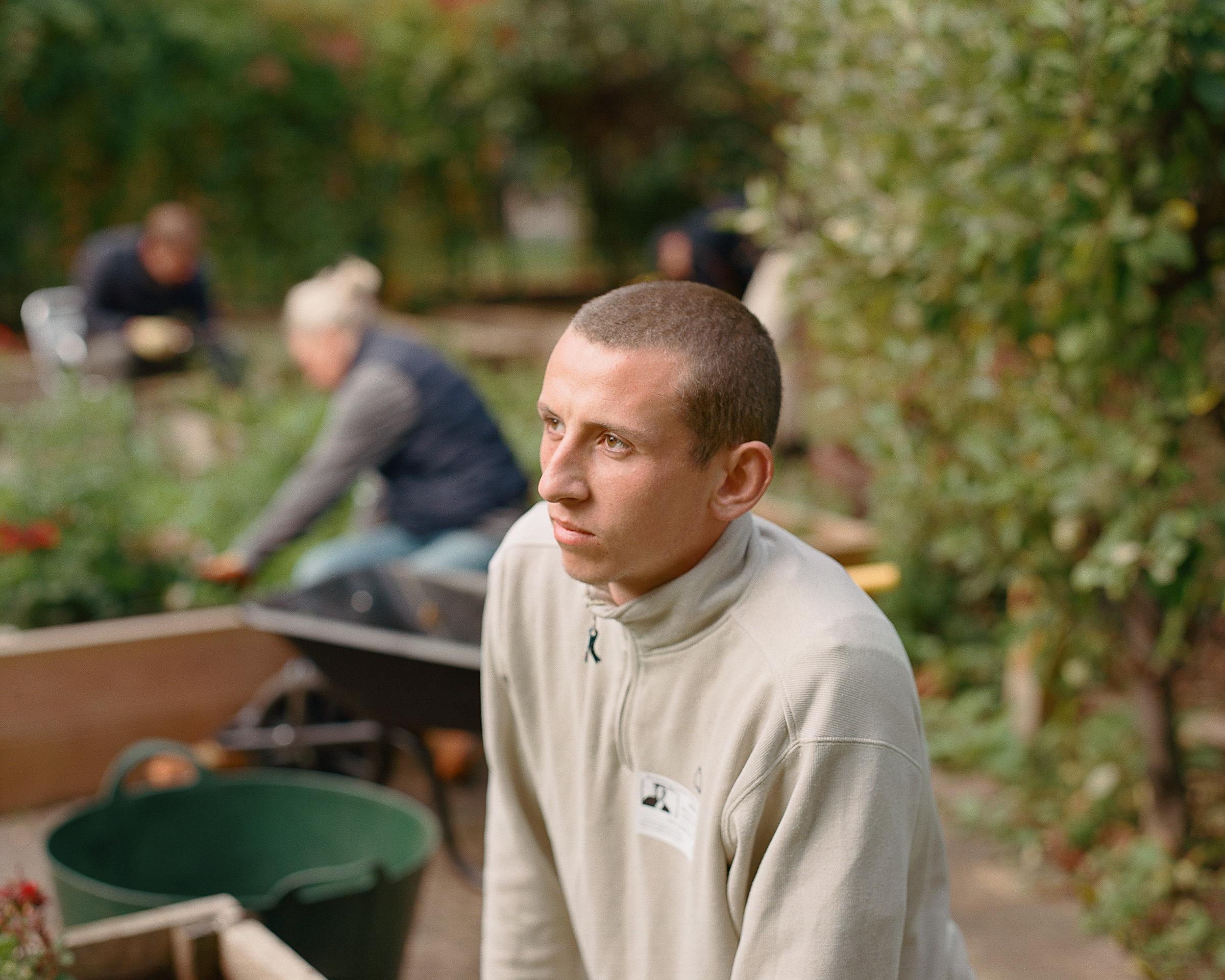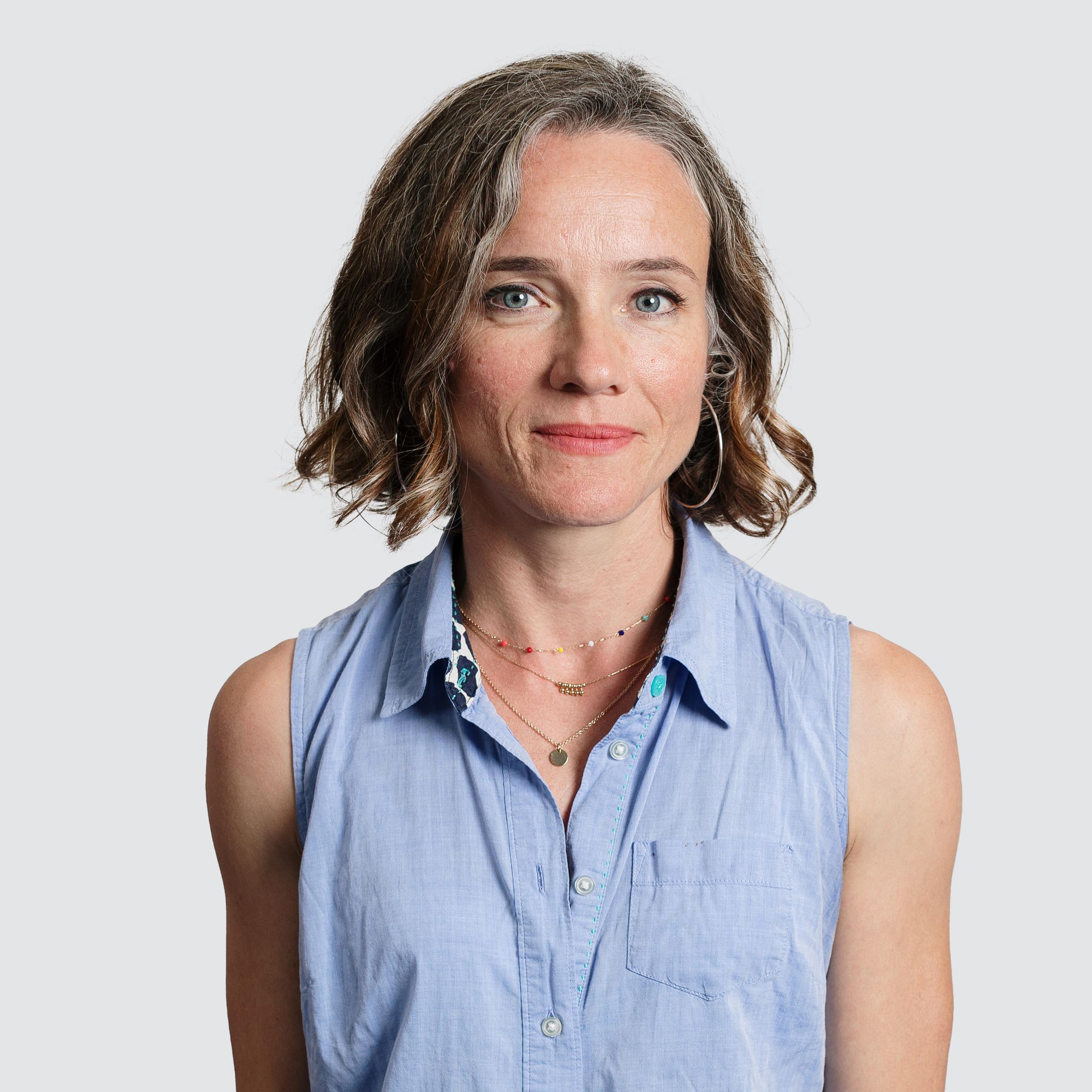
Emerging Futures at JRF - two years in, the story so far
As we head into the autumnal months of the year it’s a time of turning leaves and brisker air. A time of harvesting, and sharing the fruits of our labour. In that spirit, Sophia Parker has spent some time pausing and reflecting on where we are here at JRF in our Emerging Futures work.
From 2025, over a period of 5-10 years, JRF Trustees have committed to spending an additional £50-100 million on work that ‘supports and speeds up the transition to more equitable and just futures, where people and planet can thrive’. In preparation for that, we set up 2023 and 2024 as a two-year cycle of learning about what it means to be a funder that’s committed to supporting and speeding up the transition. You can read more about the programme we planned for 2023 here.
And what a lot of learning there is to do. We are simultaneously learning about what kind of work we think needs more oxygen, how best to resource this work, understanding our own position in the ecosystem, and making sense of the kind of team we need to be to do this work well. Across all this work we are committed to learning through doing: testing hunches, refining propositions. It’s been so busy we’ve not shared as much of our workings as we would have liked. This long read is the first of what we hope will be a more frequent series over the next 12 months.
What is it we are really trying to do?
Sometimes I find it easiest to talk about the work we’re doing by sharing my own route into it. Before I joined JRF I worked at Little Village, the London-based charity I set up and ran for 6 years. At one level, Little Village’s model is simple: it’s like a foodbank, but for baby kit. But at a deeper level, we wanted to build social infrastructure so that families could help one another. Our model was designed around reuse, community and connection, and our values of love, solidarity, thriving and sustainability were a direct counter to the divisive forces of consumerism and individualism that shape our lives (for more on this, you can listen to this episode of the LSE’s Changemakers podcast).
I was doing this work in London, a global city where 4 in 10 children are growing up in poverty, and where destitution is rising sharply, especially for families with young kids. Every day, we saw up close how vast economic, technological and social trends are playing out in the realities of people’s lives. Babies sleeping on towels, kids without shoes that fitted or warm coats, mothers so hungry they were struggling to breastfeed their newborns, toddlers living in rooms so small that there was nowhere for them to learn to crawl.
I hope that the Emerging Futures work is an invitation for anyone who sees this injustice and rather than advocating for more food banks, more baby banks, more period banks, says ‘surely, it doesn’t have to be this way?’. Anyone who asks ‘could another world be possible?’
If we are going to take those questions seriously, and answer them well, then we need to focus our energies on building alternatives we can move towards, rather than expending our energy and resources on trying to fix broken systems that are diminishing lives and hurting the planet.
In this place of transition - a place that feels disorienting, confusing, messy - we need to be learning from each other, plural in the possibilities we generate, and willing to let go of those mental frameworks that are no longer serving us well.
I see the Emerging Futures programme as a call to action: an invitation for us all to dream of the more beautiful world our hearts know is possible, and then, crucially, to start building them. Our role at JRF is to seed, nourish and sustain these futures.
Communities alone can’t fix this
For sure, we need to do that work at the level of communities, as I attempted to at Little Village. But let’s not put the onus on communities to do all this work. We need to look too at the systems and structures that we often treat as fixed and immutable, that combine to reinforce and sometimes augment contemporary patterns of inequality and planetary overshoot. These include land and our relationship to it; ownership, and how that is shared across society; capital and assets and how they flow between people, households, businesses, places and landscapes. They also include governance, regulation and the law, and the way all these things temper some behaviours while incentivising others.
The Emerging Futures programme is about deliberate, iterative future-building work, that’s fed by imagination, rigorous analysis and a willingness to experiment tirelessly. It’s about work that grapples with the unseen economic, social and cultural forces that shape our lives - for example, the complex incentives that shape how capital flows, or the mental models that we use to think about wealth - as well as re-shaping the more tangible manifestations of these systems. This isn’t a bit of fun, some dreaming and brainstorming with brightly-coloured Post-it notes. It is hard, pragmatic work that confronts some of the fundamentals that shape our lives: what we value, how we can live more equitably and sustainably.
When I first started work at JRF two years ago, we talked about this being the ‘deep’ work that’s needed alongside the urgent work of my colleagues who campaign day in day out to ameliorate the worst impacts of poverty on households today. But as time has gone on, I’ve come to see this deep work as just as pressing as the urgent work. It is a false binary.
Narrating the moment
Last month, as part of a JRF awayday, I hosted a panel with Gemma Mortensen and Joe Brewer, two incredible people who are in the business of building alternative futures. As the conversation unfolded, they told a troubling story of crisis, of how the choices we’ve made have led us to a brink from which we may not be able to return. And yet, even as they described the catastrophe of multiple instances where we have crossed planetary boundaries, they also pointed to the glimmers of hope - the tentative stories that suggest there are possible routes through this bleak present into a better future in harmony with people and planet, even if they are hard to find sometimes.
As they spoke, I felt my body tensing up: a rising sense of anxiety about my children’s futures, a visceral fear of loss and of giving up comfort. Judging from the discussion in the room after, I was not alone. We find it so hard to engage in the scale of change that’s now needed. It reminds me of the Netflix hit Don’t Look Up: it seems that it can be too painful to confront the reality of a world where the current ways of doing things are actively harming us and putting our children’s futures in jeopardy. This state of flux is frightening, confusing, an invitation to cling on to that which is familiar. Keep calm and carry on: surely the worst motto ever for these troubling times.
I’ve noticed another response to panels like the one we hosted with Gemma and Joe: a kind of eye-rolling ‘why don’t you get real’ challenge, exhibited in a recent episode of The Rest is Politics where Rory Stewart dismissed Kate Raworth’s work pioneering a new model of ‘doughnut economics’ as ‘utopian’. We live in a world where pragmatism trumps dreaming; where hopes can be dismissed as folksy, woke whimsy rather than, as Rebecca Solnit argues, a powerful site of action. I am not sure where or how the so-called ‘realists’ get their confidence and self-belief from: how ‘real’ is it to argue that we can chart our path to a future within planetary boundaries, by merely tweaking what we already have? Through doing this work I have learnt that when people invoke ‘realism’ they often mean ‘sticking to what we know’. We need to recognise that the logics underpinning our current economic and social systems are not serving us or our planet well. At some point, perhaps in the not-too-distant future, the realists may start to look like the fantasists.
An earlier panel at the JRF awayday brought together a group of political insiders. They told a story of an ever-decreasing window of action, with politicians feeling hemmed in from all sides by a volatile electorate, diminishing resources and a long list of systemic challenges. Far from inviting people to engage with the transition we need to move through, elected leaders are stuck: doing the best they can (mostly) within the constraints of fixing, sustaining, improving current systems and easing the worst effects of poverty and climate crisis on communities. It’s like they’re trapped between a rock and a hard place: as a progressive politician, to assume any other position than this simply risks giving away votes to other candidates whose agendas may not be so focused on fairness and equity.
So how are we, the public, making sense of this confusing, disorienting picture? Polling and attitudinal data suggest that the overriding mood of the nation is one of fear and fatalism. On the one hand, people report a sense of broken-ness, of life getting worse, with more than two thirds of the population believing now that their kids will be worse off than they are. And on the other, they tell researchers that they do not believe things will change; that politicians don’t have our interests at heart; that the system is rigged. Things aren’t working, and change isn’t possible. It is a depressing picture, confirmed by troubling accounts of children sleeping on floors and catastrophic declines in mental health: a humanitarian crisis unfolding right in front of us, in one of the richest nations of the world.
How, in all this, do we find the story of the moment we are in? Somehow we need to raise our eyes and face the scale of the polycrisis, but to do that without letting the fatalism take over. Somehow we need to find a way of holding two truths at once: one, that the prevailing economic and social systems are no longer serving us well and are in decline; and two, that amid the decay of these systems, new possibilities are emerging everywhere. For while it is true that these are times of great political instability, growing divisions and fear, fatalism and inequality, it is also true that these are times of imaginative reinvention. New hope and possibilities are springing up around the world in many sectors, from biodiversity to energy to finance to care.
The longer I do this work, the more I understand that we need to build a stronger account of the moment we are in: a story of decline and new opportunities; of deep crisis and mind-bending possibilities. Most importantly, a time to act from hope rather than sink into fatalism. We need to confront and reckon with the existing order; to reveal it for what it is, to grieve what we might need to say goodbye to, and then to start paying attention to the seeds from which better, more beautiful futures might grow.
The problem of a ‘vision’ in an emerging world
Our work is called ‘Emerging Futures’. If you focus on the ‘futures’ part of that, you might quickly imagine that our job is to paint a vision of the future we want: to outline a blueprint, and develop a set of proposals about how we might get there. But the futures people dream of are rarely made up of a list of policy recommendations. Rather they are described as certain values, principles, qualities, relationships. Those may manifest themselves in many ways; to suppose that we can predict or dictate that process of emergence is to ascribe ourselves God-like levels of power and foresight.
That’s why we talk of ‘futures’ in the plural rather than a singular ‘big-V’ vision of how things should be. We might be able to describe a direction - from extraction to regeneration; from ownership to stewardship; from human to more-than-human - but that direction is less of a blueprint, and more of an invitation to reimagine the way the world is now, to allow something new to emerge from the shadows of our dreams and our hopes. As Alastair McIntosh says,
Vision ... isn't just another strategic plan. Vision is a reordering of how we see reality. Without it we'll never reach the roots of climate change or war or poverty. We just wallow in the same old darkness of our limitations.
Alistair McIntosh
Perhaps the longing for vision as a clearly articulated destination is itself a function of the limitations of current mental frames. Thinkers such as Bonnitta Roy argue that these kinds of longings are rooted in ‘crisis thinking’ where we grasp for certainty and known quantities, rather than starting to pay attention to the less tangible realms of things that could be, things that should be, to our spiritual worlds and our intuitions - things which may not ‘exist’ and yet are no less real. All this lies behind our decision to create the Visionaries programme, so that the mystics, the shamans, the sages - those that bring entirely unfamiliar offerings into our midsts - can steer us in new directions.
None of this is to say we have no idea what we are working towards. But we focus much more on strategic intentions than strategic planning, and ground ourselves in the philosophy so beautifully described in adrienne marie brown’s work - that ‘what we pay attention to, grows’. Our work confronts the uncomfortable truth that the future cannot be predicted, but we also believe that to some extent that future will be shaped by what we choose to pay attention to in the present. If we want to speed up the transition to more equitable and just futures, what is already here in the present that might guide us towards that?
In searching for answers to that question, we’ve been inspired by the Three Horizons model developed by Bill Sharpe and others. Three Horizons isn’t a temporal model of present, near-future, and far-off future. Rather, it’s a tool to look with three different lenses on the present moment. It is an invitation to recognise that the present is made up not only of that which is know-able and measurable, but also that which may be more latent, hidden: the stuff of our hopes, our imaginations, our spiritual existences. What might happen if we treated those as real too? How might they shape a different set of choices and priorities?
Margaret Mead wrote of ‘pre-figurative cultures’: times in history where the past is no guide to the future, and in this context I love MAIA’s framing of their work as ‘a rehearsal of the world we want to be’. What exists here today that prefigures the futures we dream of? What if we got better at noticing those glimmers - those fragments of hope that offer some clues about how we might need to reorder our world? What is already here, hiding in the soil, perhaps not seen unless looked at through new eyes? What might we start to notice if we take off the blinkers created by the harmful, extractive logics of current economic systems?
Tending to a visionary ecosystem?*
(*With thanks to Perspectiva for coining this phrase as part of a recent commission we’ve collaborated with them on).
The Berkana two-loop model is an ecological model of change, drawing on cycles of nature to describe the way change happens. Margaret Wheatley, the brains behind the Berkana model, spoke of four essential areas of work that are needed to sustain an emerging paradigm: naming, connecting, nourishing and illuminating elements of the emerging patterns. These are how we are beginning to understand our role in this work: seeing ourselves as gardeners, or midwives, working to nurture and sustain new life in this fragile ecosystem of new practices, institutions, and relationships that put human and planetary flourishing at their heart.
1. Naming. As the work is unfolding we are constantly asking ourselves what are the characteristics that define this ‘visionary ecosystem’. This is a live question we explore with the network of pioneers and change makers we’re resourcing, and last year we shared some early thinking on this, and it continues to evolve. As we learn we are coming to see some characteristics as particularly important:
- Starting from a different place: understanding the work as building a post-industrial regenerative economy that centres human and ecological wellbeing, rather than trying to address or fix current problems.
- Addressing change across multiple, interlocking systems simultaneously: deep awareness of the wider systems and landscapes within which the work is located, and actively designing the work with these in mind through skilled weaving and facilitating.
- Bringing a propositional and iterative mindset: these are people who practice something as well as think deeply; they build in the real world, and through that work learn more about what else needs to change.
- Ecosystem mindset: the work is seen in service of the emergent paradigm, not a single organisation or community. This means the people doing the work share it, and the learning that comes from it.
- Plural practices and capital: the work honours many different forms of knowledge and practice, both ancient and new. And it recognises value in many different forms including natural, human, social, and financial capital.
- Designing for longevity: viewing change as a living process of evolution and co-creation, with the long-term rather than short-term results in mind.
2. Connecting. Critical connections between future-builders matter more than critical mass in long-term transformative work: without these, nothing new can emerge. Networks are the lifeblood of emergence, and yet so much of the way life is organised gets in the way of pioneers connecting. Many of the people doing this work feel embattled, fighting against current systems, and sometimes against each other in a competitive funding environment.
We see this work of connecting as a crucial activity: it ensures that the pioneers up and down the country are not a disconnected set of individual efforts, but rather have the potential to be a ‘system of influence’ in Wheatley’s words: a visible, living ecosystem of future possibility, showing up in the present, holding more power together than even the sum of their parts ever could, and showing more capacities than could ever have been predicted by analysing each of the parts separately.
Emergence is beyond what the sum of its parts could even imagine.
Margaret Wheatley
3. Nourishing. At a very basic level, organisations like JRF can nourish this visionary ecosystem through resourcing it financially. There is plenty of evidence (see this report from the Civic Power Fund, for example) to suggest that UK Foundations pour the vast majority of the wealth they spend into sustaining the current system rather than the emerging one – and during 2024 we will be publishing more data and analysis to illustrate this. Funders have a bias towards backing work that is ‘proven’ already, with Trustees exhibiting a fondness for impact metrics that show ‘results’ in short time frames. These biases work against efforts to resource an emerging ecosystem, and our view is that this needs to change.
How the money flows into this visionary space also matters. Foundations most often fund stuff via grants, and sometimes social investment. These mechanisms are usually one-off grants, attached to specific deliverables. This sort of funding flow is at odds with the resources this fragile, emergent work needs: long-term, non-extractive, democratic, patient finance. Globally we are beginning to see experiments in finance vehicles that speak to these needs and we see part of our work to resource more of these experiments, and to tell the story of why they matter.
As the Emerging Futures programme has evolved, we’ve also come to understand that ‘nourishing’ is about so much more than funding, important though the money is. The participatory grant-making movement in recent years has encouraged philanthropists to wake up to the power dynamics that inevitably accompany funding relationships. This wake-up call is surely good news - but one unintended consequence of this movement is that it has led to a widely-unchallenged view that the job of philanthropy is to ‘get out of the way’.
By contrast, we think that to nourish a visionary ecosystem, a much more activist stance than this is required. Funders occupy a privileged position where they can see patterns, and with practice, spot new things that are emerging. We want to embrace that role. Alongside funding the pioneers and changemakers, we think we need to be actively field-building around them: convening people and ideas, commissioning and platforming new thinking and practice. We also want to work with other funders to improve our collective skills at foresight, to shape better funding decisions. This is an integral part of our work: linking the emerging glimmers to each other and a bigger story of transition and change.
4. Illuminating. One of the challenges of the visionary ecosystem is that it doesn’t fit easily into the way we think and talk about the world today. By definition, visionary and transformative work points to a different way of valuing things, to new relationships between each other, between ourselves and the economy, between the human and more-than-human world. Seeing emerging patterns in dominant landscapes is hard. So part of our role is to do our best to illuminate these patterns, through telling stories of hope and possibility. Rob Hopkins argues that the biggest challenge for activists today is to create a deep longing for different kinds of futures – instilling a more firmly held belief that what we have made can be re-made, and that there are people living among us who are doing this work right now.
I’m very excited that over the next couple of months we will be sharing our learning on what it takes to see and describe these ‘glimmers’ of alternative futures, drawing on the rich insights of people whose eyes are perhaps better attuned to seeing and perceiving things which might otherwise stay hidden from view in current modes of thinking and seeing.
Another world is possible
Another conceptual model that’s important to our work is Tatiana Fraser’s power shift model, which is an evolution of the socio-technical transition theory developed by Frank Geels. These models have been applied by academics such as Johan Schot to explore how the transition needs to happen across multiple levels - not only in communities, towns, cities, but also in the policy, governance and regulatory regimes that shape our lives, and the narrative waters we swim in. Cassie shares here how the Three Horizons, the Two Loops model and the Power Shift framework can all work together.
Our belief is that for changes to occur at these different levels, we also need to pay attention to the soil: the earth from which new possibilities might grow. Today, the model of consumer capitalism that has shaped our lives for 50 years has left our country’s physical and spiritual soil barren, so we are disconnected from the very earth that sustains life on this planet. Attempts to transform systems without paying attention to this soil are, at best, an attempt to sow seeds in the depleted, dried out mud of places that have been decimated by austerity and a commodified labour market. At worst, the obsession with ‘scaling up innovation’ is akin to dumping an industrialist’s monocultural soil on top of what is already there, rather than asking whether we might need something different in the first place.
In his most recent book, Geoff Mulgan has argued that we are experiencing a ‘crisis of collective imagination’ and points to plenty of evidence for this. If we are to dare to look beyond prevailing economic orthodoxies and dream of something different, we can’t just expect it to happen: we are going to need to nourish the soil in new ways. To give it nutrients, to respect the landscape’s natural variations and allow a flourishing of many different kinds of plants and wildlife.
It seems to me that the real crisis of imagination we’re suffering from is that we’ve come to see our current world as fixed. Arturo Escobar, who spoke at our Imagination Infrastructures event this year, talks of a ‘world in which many worlds are possible’. I love this, and it always reminds me that the world we live in now is the product of our imagination just as much as any alternatives we imagine. Part of our efforts need to be about ‘messing with the present’ and reminding ourselves that we’ve imagined ourselves to this moment, and are capable of imagining ourselves to a new one. I wonder whether we will only manage to see this when we find ways of relearning how to think in terms of multiple generations, drawing on Indigenous practices in honouring ancient wisdom, in the spirit of the Maori proverb ‘Ka mua, ka muri’ - ‘walking backwards into the future’.
In our work we are backing efforts to grow our imaginative capacity, and to build imagination ‘infrastructures’ - the practices, spaces, and capabilities that mean we can improve the quality and richness of the soil from which new possibilities emerge. We see this as an ongoing part of the Emerging Futures programme, and it includes work such as:
- Resourcing a network of collective imagination practitioners: culture-makers, designers, artists and social entrepreneurs who are working with communities and groups to imagine alternative futures. Working with Huddlecraft, Canopy and the Centre for Public Impact, we’re convening spaces for these practitioners to share their work, and deepen their learning together. We’ve attached an open fund to this network, that participants can draw upon to fund experiments. So far this year we’ve seen groups work together on what disabled joy looks like, the development of land-based black imagination practice, and a prototype of a creative writing workshop to support organisers to more boldly imagine alternatives.
- Commissioning an academic study with Keri Facer at Bristol University to explore the practices and methodologies that help people to imagine together, to expand our collective sense of what’s possible. We know that imagination work looks and feels quite different to adjacent practices such as citizen juries, user-centred design and deliberative democracy, but this is a nascent field and we want to bring some rigour and deeper understanding into the processes that help people reconnect to their imagination and act from those places.
- Funding organisations who are experimenting with creating ‘imaginaries’ in place: spaces that bring people together to dream of better futures for their communities. For inspiration check out Superflux, CoLab Dudley, the Onion Collective, and Opus. We’ve also backed place-based imagination experiments to learn more about how people can come together to do this work - most recently with New Constellations in our home city of York.
- Learning more about what might be needed to nourish the imaginative soil in places where it has been most depleted by changes to the economy and where climate change is most likely to hit hard. I’m hugely excited by our collaborations in Hartlepool, for example, and over 2024 we will have more to say on this question.
Imagination is hard, challenging work that frequently generates conflict and difference, as people experience new perspectives that emerge from processes that destabilise dominant cultures, norms, and modes of thinking. It’s crucial we keep the imagination work in this space: it’s not something that can be contained, harnessed, scaled, rolled out or any of those other phrases so loved by policy makers. Rather it is about creating opportunities for people to rewild their minds: to reach into the unknown and unknowable, to tap into ancient and new forms of knowledge and wisdom, and to let go of aspects of modern life that draw a veil over these less conscious parts of ourselves that whisper of deeper dreams and longings.
Some of this work might feel like a long way from the anti-poverty agenda that JRF has built a reputation for. But we see it as essential work if we’re serious about building alternatives to the economic and social systems that have generated so much harm to so many.
Can we really do this as a philanthropic organisation?
Like many of the organisations we back, the Emerging Futures programme is trying to build the new in the context of the old: modelling a new set of practices and values from within a philanthropic sector that is rooted, as Fozia Irfan argues, in extractive models of colonial capitalism. That is a deeply uncomfortable place to sit and we are keenly aware everyday of the gravitational pull of mindsets and practices of systems that have perpetuated harm and deepening inequality.
And yet funding and investment decisions taken this decade could impact the next century, and play a decisive role in our collective futures and our ability to meet the needs of the transition. Philanthropy has a potentially unique role to play here: we are not constrained by the 24-hour news cycle, the quarterly business results cycle, the five-year political cycle, or even the 10-year financial markets outlook. We can take a radical and genuinely long-term view of what it means to steward wealth in harmony with people and planet. But what does that mean in practice for our work?
Taking a critical view of wealth
Much of the policy interest in wealth (inasmuch as there is any) is centred on the way in which it is more equitably distributed (for an excellent exploration of where we are on these issues, check out Tom Clark’s blog series for JRF). We are also interested in illuminating how and why it is accumulated in the first place, particularly in the context of the Great Wealth Transfer. This focus on wealth is a core theme of our work this coming year. We want to find ways of showing how extreme wealth and extreme poverty are not separate issues, but related manifestations of a system of extractive capitalism that does not serve people or planet well. We also want to explore the psychology of wealth. What will it take to move from a scarcity to an abundance mindset, where people no longer see the loss of monetary wealth as akin to death and failure?
We also think there’s work to do to look beyond the huge growth in impact investing over the last decade. Sometimes this is presented as the solution, but in many ways the values, incentive structures and models of ownership in these impact-led models are little more than variants on the mainstream finance system’s architecture. We’re planning a ‘first principles’ piece of work with players across different elements of the financial world to look again at how we classify assets, risks, liabilities, and profit.
A new infrastructure for holding wealth in support of the transition
We’re already playing a role to convene people around the next frontiers of funding and investment, for example through the conferences we’ve hosted or co-hosted, and the learning journeys for funders that we’ve curated. Alongside this we are seeking out those people who are building financial vehicles that grow community and ecological wealth, and economic democracy.
Over the next 12 months we also need to work intensively on the question of what is the right infrastructure to hold the additional £50-100 million of our endowment that Trustees have committed to this work from 2025 (a sum that we very much hope to grow with other wealth-holders). We are not alone in this enquiry - with Lankelly Chase and Thirty Percy both making public statements about their own futures in the last year. Our hunch is that it is right to talk about ‘infrastructure’ rather than a single vehicle such as a pooled fund: perhaps that money will be held in multiple places - a fund, a regional innovation endowment, a bioregional bank.
Turning the lens on our own organisation
At the moment, JRF is not dissimilar to the vast majority of other philanthropic organisations in our operating model. We have an endowment, most of which is currently invested in mainstream markets, with about 5% ring-fenced for social and impact-led investments, where the returns expected are lower. The profits from this are used to generate our annual spending budget. It was one of the biggest shocks I had when I moved into the weird world of funding two years ago: we spend 5% of our money trying to solve the problems that the other 95% is in some way responsible for creating.
There are some big and difficult debates in the foundation sector at the moment relating to the history and future of philanthropy, beautifully laid out by speakers on this panel at July’s Next Frontiers conference. Some foundations have reached radical conclusions, effectively deciding to wind themselves down – moving their endowments to different vehicles, or spending down. Others have engaged more specifically on questions of reparations for past injustices. Some are thinking about these issues but reaching more traditional conclusions. Others have yet to embark on the work in any serious way.
As we head towards 2025, we are working with our own Trustees, as the legal stewards of JRF’s wealth, to look again at our endowment strategy and investment principles, to ask how can we ensure that in these things, as well as our spending decisions, we are meeting our stated mission - to support and speed up the transition to more equitable and just futures - with integrity and ambition. We’ll be working alongside Good Ancestor Movement, The Social Investment Consultancy, Deep Transitions and Redington to do this work.
Some reflections on the experience of doing this work
- It is hard to stand in emergence and be honest about ‘not knowing’, when you are surrounded by demands for expert knowledge, impact statements and certainty. But when former Bank of England governors start penning books called Radical Uncertainty, it might be time to look again at our traditional models of assessing risk and impact. As we’ve been developing this work, we’ve also had to explore alternative ways of understanding impact and contribution, given we are dealing in bets and probabilities rather than known quantities with this work. We centre ‘learning’ over ‘impact’: trying things, learning from them, and using that learning to inform the best next step. We do our best to ‘learn through funding’ rather than trying to work it all out perfectly while sitting on the money, but it is not easy. There is a burgeoning field of evaluation practice we are learning from thanks to our collaboration with Kerry McCarthy, but it is an ongoing challenge to give an account of emergent work within dominant models of evaluation and knowledge.
- It is hard to be told frequently that your work is too hard to understand. Yes, we need to be accountable for speaking as clearly as possible, but I also notice how frequently people struggle to engage with things that don’t quite accord with their current view of reality. What if that ‘not understanding’ was met with a curiosity rather than a dismissal? What if people operating in current frames were put under the same pressure to explain themselves, to show their workings for why they see the world as they do? I can’t help but notice how frequently it is those who hold privilege and comfort in the world today who find the work we’re doing through this programme hardest to understand.
- It is hard to make room for the depth this work requires when the world is burning around us. Dimple Abichandani’s work on philanthropy is so chilling here: she tells a story of a sector paralysed by overwhelm and hopelessness. It is so easy to get caught up in the urgent work that is so desperately needed. But we return frequently to Bayo Akomolafe’s wise words: ‘in times of crisis, slow down’. The deep work is as pressing as the urgent work. We are slowly learning as a team how we might embody some of this, but it’s so hard to do when so many of the people we work with struggle to find the space and resources to survive.
- It is hard to do this work of nurturing an ecosystem as a funder with all the power and legacy that this entails, in a world where there are very powerful and established practices of grant-making. We’ve deliberately recruited a team of people who are not steeped in current philanthropic practice, and many of us wear multiple hats (as energy healers, social entrepreneurs, systems coaches, as well as working for a foundation). We bring a diversity of lived and professional experience into a sector that Nkem Ndefo talks so powerfully about as being driven by shame - shame about its privilege and its whiteness. How we navigate these currents without getting stuck on the rocks is a constant challenge.
And yet, despite all of these difficulties, there is no other work I want to be doing right now. I believe that the future can be better than gloomy projections suggest it will be if we don’t change course. I don’t know if we will get there, but I believe it is possible, and that’s my starting point. I’ll finish with the words of Maya Angelou’s beautiful poem, On The Pulse of the Morning:
Each hour holds new chances
For new beginnings.
Do not be wedded forever
To fear, yoked eternally
To brutishness.
The horizon leans forward,
Offering you space to place new steps of change.
There are many people who have inspired me and shaped the thinking I’ve shared here, beyond those already namechecked. Special thanks to the Emerging Futures team, especially Cassie Robinson; the incredible Pathfinders ecosystem, Indy Johar and the Dark Matter Labs team, Bayo Akomolafe, Gemma Mortensen, Anab Jain, Julian Corner, Dimple Abichandani, Geoff Mulgan, Donella Meadows, Jennie Winhall, the crew at Perspectiva, Iris Brilliant, Maurice Mitchell, Bill Sharpe and Graham Leicester.

This reflection is part of the imagination infrastructures topic.
Find out more about our work in this area.





